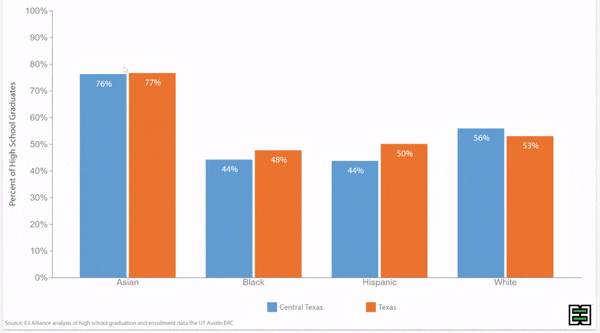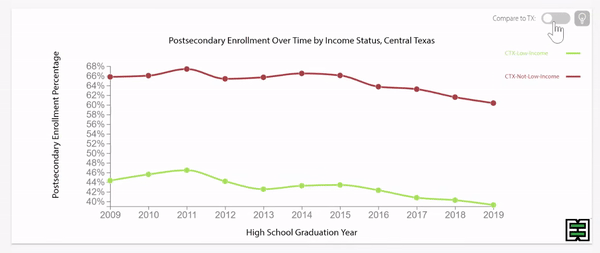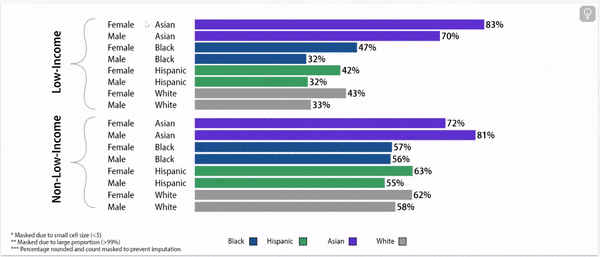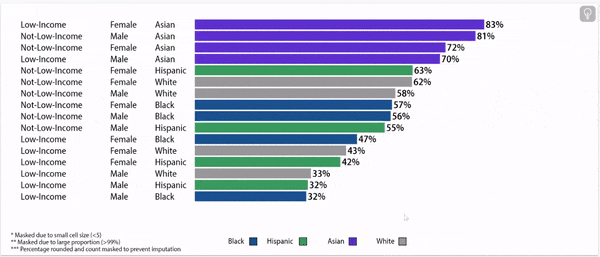Postsecondary Completion Profile
Jump to: Source and cohort information about this data.
2016-17
58%
5,888 / 10,201
Central Texas
Postsecondary Completion Rate (Within Six-Years)
2016-17
54%
7,459 / 13,880
San Antonio
Postsecondary Completion Rate (Within Six-Years)
Postsecondary completion rates within six years of graduating high school among students who directly enrolled in postsecondary increased slightly in Texas.
Postsecondary completion rates vary by household income status in Texas.
Disparities exist in postsecondary completion by household income status in Texas.
Postsecondary completion rates vary by race/ethnicity in Texas.
Postsecondary completion rates vary by emergent bilingual status in Texas.
Postsecondary completion rates vary by gender, household income status, and race/ethnicity.
Postsecondary Completion Rates Within Six Years, 2017
About this data:
E3 Alliance relies primarily on data from the University of Texas Education Research Center (ERC). This data allows for a longitudinal understanding of postsecondary enrollment, persistence, and completion, based on where and when a student graduates from high school. This data pertains to graduates from within the state of Texas who enroll in Texas postsecondary institutions within one year of graduating from high school.
Following are items to note:
The year of the data represents the year of high school graduation. Measuring completion requires six years to elapse. The graphs below present postsecondary completion data through the graduating class of 2017.
Cohort: First-time 9th grade students who graduate within four years, including students who transfer in
Outcomes that reference data from 2021, 2022, or 2023 do not include San Marcos CISD, due to a data discrepancy.






